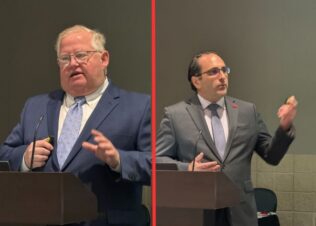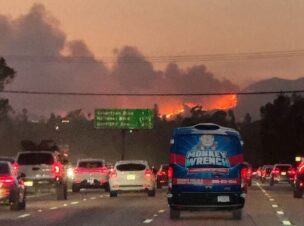Job Scope:
- Remote lake home with hydronics ceilings & panel radiators
- Dual-fuel system (Electric boiler w/ High efficiency back-up)
- Not directly connected to water supply for system fill/maintenance
Not all hydronics systems [or solar thermal systems] are connected to a water supply for filling and maintenance. In the case of our family’s lake home in Northern Minnesota we turn the water on only when we are onsite as the cabin sits empty over 60% of the year. Making repairs and fixing water damage due to a broken pipe is not my idea of fun when the main focus of our weekend is fishing and family fun.
This situation is not uncommon for a lot of my installs. Whenever a constant water supply is not available for a boiler or solar thermal system I have installed a “system feeder”. Most of our systems are filled with a glycol/water mix as well which requires the installation of an expensive back-flow preventer that has to be tested annually and permitted separately for tracking. These system feeders eliminate the need to install a backflow device and PRV.
As far as I know there has only been one major brand product in this space in past years and I am very familiar with it. I have installed the competitor model over two dozen times and have repaired many of those systems as well. After just one recent install of the new NSSF6-2 system feeder I can say with confidence that it is built with better components and well thought out.
The installation of these devices is fairly straightforward; I’ve included some photos with highlights of the product features.
The install:
 The NSSF6-2 system feeder comes fully assembled and leak tested [you will have to plug the power supply cord into the control module] straight out of the box. The feeder is equipped with a ½” FPT sch. 80 ball valve connection for onsite piping.
The NSSF6-2 system feeder comes fully assembled and leak tested [you will have to plug the power supply cord into the control module] straight out of the box. The feeder is equipped with a ½” FPT sch. 80 ball valve connection for onsite piping.
The digital pressure control can be set from 1-50 psi, right out of the box its ready to go at 15psi cut-in and 16psi cut-out making installation quick and easy for the majority of residential boiler systems.

Connect the pipe or tubing from the feeder to an isolation valve at the same point in the system that the expansion tank is connected. Do not install a check valve or a PRV (pressure reducing valve) between the feeder and the system. If using a bladder style expansion tank be sure to inflate the tank to same pressure that you want the cold static pressure of the system to be. This must be done while there is no pressure on the expansion tank.
The 6 gallon poly tank has a 5” vented cap for filling. There is a float switch in the tank, which will shut the pump off and close an alarm contact on the circuit board when the fluid level gets low. A blank connector on the left side of the electrical box can be used to run wiring to the dry alarm contacts (no-c-nc). External alarm can have a maximum 1-amp load.
The system feed is designed to feed and maintain pressure in closed loop hydronic and solar thermal systems tat require up to 50 psi of cold static pressure using water or glycol (up to 50%) solutions. The commercial-grade diaphragm pump has an internal check valve and is self-priming. The pump is equipped with a secondary pressure switch set to cut out at 60 psi.
The Rundown:
- 6 gal. reservoir w/ 5” vented cap & threaded inserts for optional mounting
- Tank dimensions: 15″w X 12″d X 8″t
- Eliminates the need for a PRV & backflow preventer
- Limits amount of fluid loss in the event of a major system leak
- Fully assembled right out of the box
- UL Listed 10A power supply, cord provided for 120VAC outlet
- List price: $995, expected wholesale comparable to existing market offering





Join the conversation: